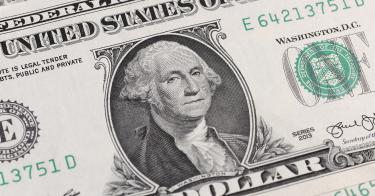Now is the time for all democracies to stand together and for American leadership to shine.
The U.S. economy cannot fully recover unless our foreign friends and allies recover, too. Moreover, a joint return to economic prosperity is key not just to our people’s well-being, but the free world’s capacity to endure in this era of great power competition. And for strategic purposes as well as economic performance, no partnership is more important for America’s future than the transatlantic community.
Today’s pandemic-induced economic disruption is unprecedented. This isn’t a depression. It isn’t a recession. This is a suppression wherein voluntary acts to mitigate the spread of COVID-19 have shaved points off everybody’s GDP. The response to the pandemic has disrupted trade, travel and investment, hammered small companies and sent unemployment skyrocketing.
The best remedy for all these ills is to get business back in business and to encourage free peoples to partner together in free markets. To this end, we need a U.S.-European Partnership Recovery Program. It would signal to the world that the transatlantic community is coming back stronger than ever.
>>> The U.S.–European Economic Partnership Recovery Plan
We’re not talking about a second coming of the Marshall Plan. After World War II, Europe was in shambles. That is not the case today. Both continents have vibrant private sectors, centers of innovation and unmatched potential. We will not be starting from scratch.
Rather, the U.S-European Partnership Recovery Program would focus international energy and attention to leverage the capabilities of existing institutions, ongoing initiatives and the private sector. Participating governments would spearhead the program by eliminating red tape and making strategic investments. The Blue Dot Network initiative could serve as a useful guide to investments.
Here are some components that could be bundled together.
Start with the Three Seas Initiative. Central Europe could be an important prime for rebooting the European economy. Developed by Central European countries, the Three Seas Initiative is designed to improve the region’s north-south infrastructure by leveraging the power of private capital. The U.S. has already agreed to make matching investments worth up to $1 billion in energy infrastructure projects.
The U.S. should consider doubling its investments, extending them to include physical and digital infrastructure. Washington and Berlin ought to consider partnering on investments—particularly matching investments—if all countries directly benefitting from the initiative also contribute to the Three Seas Development Fund. Meanwhile, Central Europeans should look for ways to broaden the program by bringing in Ukraine and the Western Balkans.
Build a free-market 5G consortium. The U.S. already has an interest in promoting credible alternatives to Huawei’s efforts to corner the European 5G market. The dominance of the Chinese telecommunications giant raises a number of concerns, including grave national security risks. Secure 5G technologies exist in both the U.S. and Europe. One option might be for the U.S. and other countries to partner in offering competitive grants to help the private-sector refine their technologies so they are clearly superior to Huawei’s, helping fuel a recovery while eliminating a security threat.
Finish the U.S.-UK FTA. A U.S.-UK free trade agreement will not only benefit both countries; it would catalyze increased trade among the whole transatlantic community. The dilatory negotiations need to shift into high gear. The sooner this initiative takes off, the faster new economic opportunities will emerge.
Pursue a realistic U.S.-EU trade agenda. It’s time to stop talking tariffs and start talking mutually beneficial deals. Washington needs to ratchet back its impulsive duties on European imports and threats against Europe’s auto industry. The EU needs to become less rigid regarding regulatory harmonization, more flexible on its green agenda; it also needs to start zeroing in on reducing barriers to business formation. Rather than seek a massive, comprehensive agreement that might never get finalized, both sides should focus on cutting smaller, issue-specific deals that will deliver real impact. One prime target ought to be digital trade.
Reanimate transatlantic air travel. We need a joint action plan to reestablish commercial travel between the U.S. and Europe, using airports that can provide medical preclearance for international flights.
Yes, the world is still in the grip of a pandemic. But the free world must be preparing for life after the disease has passed. The time for this plan is now.
This piece originally appeared in The Hill on 4/13/20




